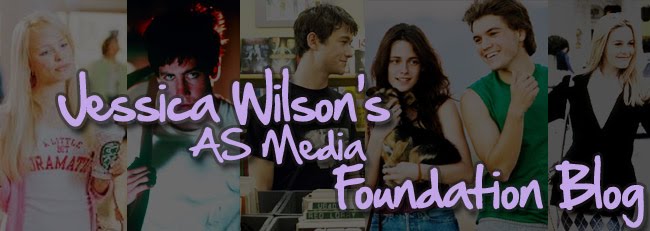From reading the notes I have learnt a lot of different continuity techniques and rules, and they will be extremely useful to me and my group when it comes to shooting my film opening sequence, as it will look much more professional and effective. I broke a lot of continuity rules whilst filming for the 'accident task' but I didn't even know the rules existed, so now I know I won't be breaking them again, unless intentionally for effect. Here are some of the things I've learnt...
Camera directions and techniques create different effects when filming, and directors use a full range of shot distances. For example:
- Close-Ups for emotion, shock value, to put the audience right in the action, to focus on something important
- Mid range for dialogue, action and for linking shots
- Long range to establish a scene or to show large scale action
- OTS shots to place us on the side of a character and empathise with them
- Camera movement to create the effect of physical movement
- To cut the film down to the required length
- To remove unwanted material and mistakes
- To change the order of shots and the way events are portrayed
- To establish a particular style for the production
- Cuts to vary pace and rhythmn
- Fades
- Dissolves to slow time down or link action in different time frames (eg. dreams, flashbacks, etc.)
- Wipes
THE 180 DEGREE RULE
There is an imaginary line which cuts through the middle of the scene and crossing this line changes the viewer's perspective so that it will create disorientation, therefore breaking the 180 degree rule. There is a similar rule for a moving subject: keep to one side of the direction of motion.
THE 30 DEGREE RULE
Don't change the camera angle by less than 30 degrees within the same framing, or viewers may notice a visible 'jump' in the footage known as a jump cut.
EYELINE MATCHING
The direction of the characters' gazes must stay the same.
MATCH ON ACTION
Movement should be edited so that the character has clearly moved between shots otherwise the action will appear as if it's been repeated.
SHOT/REVERSE/SHOT
When filming two characters talking to each other, film a master shot, then film again close to one character and again close on the other character, allowing you to cut between these three different shots throughout the conversation.
SHOT ORDER
Edit together certain shot distances for a smooth narrative, or it may seem jumpy, for example a CU to a LS may not flow very well in a conventional sequence.
There are many different techniques used in the editing room once the film has been shot:
- Transitions are used to link shots together and make the audience make sense of the film the way you intend them to.
- Sound is added, for example diagetic sound (sound effects), non-diagetic sound (not part of what's on screen eg. music) and a sound bridge (used to link two scenes).
- Lighting can be high-key, low-key for dramatic contrasts, from below to make a subject appear threatening or backlighting to produce a 'halo' effect around the edges of a subject.
- Colour can be edited, for example cold/blue lighting can signify alienation or coldness, whereas warm/yellow lighting can signify comfort and warmth. Very intense colours are describesd as saturated, and sepia or black and white effects can be used to represent a scene set in the past.



0 comments:
Post a Comment